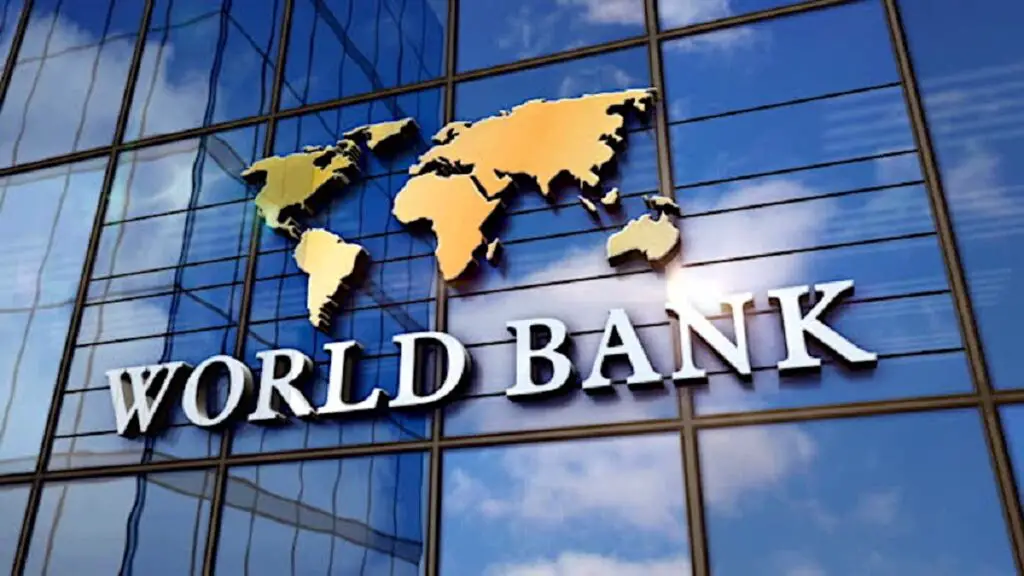- Kenya’s National Treasury has been forced to rely on the domestic credit market to finance the budget deficit.
- In July 2023, the World Bank cautioned Kenya’s government over persistent crowding out of the private sector from the local debt market due to heavy borrowing.
- In its latest outlook report, the lender says that weaknesses in Sub-Saharan Africa’s biggest economies, Nigeria, South Africa and Angola, will limit the region’s growth in 2024.
The World Bank has revised Kenya’s growth projection upwards to 5.2 per cent even as it anticipates that in 2024, economic growth will be fueled by a rise in private sector credit in the wake of an expected reduction in local borrowing by the state.
The multilateral lender predicts the country’s growth will reach an average of 5.2 per cent, attributing this positive outlook to diminishing inflationary pressures and improved financial conditions.
This rate marks an increase from the World Bank’s previous estimate of a 5 per cent growth for the nation. According to the Global Economic Prospects report by the World Bank, growth in resource-rich countries in Sub-Saharan Africa is expected to accelerate in 2024 and 2025.
Conversely, non-resource-rich countries like Kenya are projected to strengthen their growth to 5.4 per cent in 2024 and 5.7 per cent in 2025.
“Increasing investment is expected to drive growth in Kenya and Uganda, partly owing to improved business confidence,” the report reads in part.
Kenya’s National Treasury has been forced to rely on the domestic credit market to finance the budget deficit as roadblocks partly squeeze it from accessing international capital markets.
However, with a reduced fiscal deficit, the World Bank is predicting improved investor confidence and credit to the private sector, helped by reduced domestic borrowing by the government.
Tame local borrowing, World Bank urges Kenya
In July 2023, the lender cautioned the government over persistent crowding out of the private sector from the local debt market due to heavy borrowing.
The multilateral lender noted that commercial banks have not reached their optimal support for investments as the Treasury continues to compete with households and enterprises for credit from banks.
In Kenya, the banking sector remains the most significant contributor of credit to private businesses, contributing US$22.7 billion (Sh3.6 trillion) out of the total US$27.7 billion (Sh4.4 trillion) extended to the private sector in the period to July 2023.
The most significant allocations of this went to trade, manufacturing, and private households at 17.0 per cent, 15.7 per cent, and 14.5 per cent, respectively.
The report further notes that Uganda will also benefit from infrastructure investment ahead of new oil production in 2025 and investment in. In Tanzania, reforms to improve the business climate are expected to lift growth.
Industrial commodity exporters in the region, excluding the three largest economies, are forecast to grow by 3.8 per cent in 2024 and 4.1 per cent in 2025, up from 2.0 per cent in 2023.
“This uptick is due to the diminishing impact of the sharp fall in commodity prices from their 2022 peak,” reads the report.
Growth in the non-mining sectors, especially services, is expected to increase as inflation gradually declines (Botswana, Cameroon, Democratic Republic of Congo).
The World Bank stated that weaknesses in Sub-Saharan Africa’s biggest economies, Nigeria, South Africa and Angola, will limit the region’s growth in 2024.
The Bretton Wood Institute stated this in its Global Economic Prospects for 2024, which disclosed that the global economy is set for its worst performance in three decades.
Read also: Kenya spends 57 cents of every dollar on debt. Sustainable?
World Bank’s Sub-Saharan Outlook
According to the report, the SSA region is projected to grow at 3.8 per cent in 2024 and 4.1 per cent in 2025 due to reduced inflation and ease in monetary policies.
Furthermore, the report noted that the slow growth of the region’s largest economies, Nigeria, South Africa and Angola, will drag down overall growth.
Excluding the region’s largest economies, the Sub-Saharan region will see an uptick in growth from its projected 3.8 per cent in 2024 and 4.1 per cent in 2025 to 5 per cent in 2024 and 5.3 per cent in 2025.
Nigeria and South Africa are not only the SSA’s biggest economies but Africa’s. They make up about 43 per cent of Africa’s 2.06 trillion GDP. However, these continental giants have recently faced a series of economic woes.
